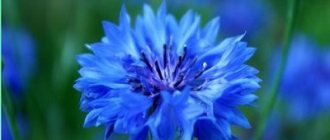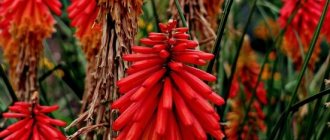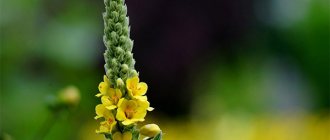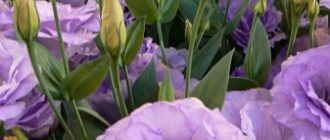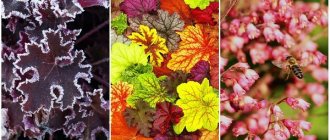Heuchera small-flowered palace Purple castle Heuchera micrantha Palace Purple planting and care photo
Heuchera heuchera is a herbaceous perennial plant of the Saxifraga family, the name is derived from the Latin Heuchera. It is named after the German physician and botanist Johann Heinrich von Heicher. Its roots are from North America. The size of the plant is small, adult bushes of the plant reach 50 cm in height.
Heuchera is a magnificent ornamental plant that is loved by landscape designers because of its brightly colored leaves. The highlight of this exquisite perennial is that during the growing season it can change its color more than once. It is impossible to find among plants a flower more saturated with different shades than heuchera.
Description of Heuchera
Heuchera plant purple midnight rose midnight rose in a flower bed photo
Heuchera is a real find, because its palette will impress even the most demanding gardener, both professional and amateur. It seems that this culture collected all the colors for itself. Starting from silver, yellow, green and ending with black. These are also all shades of red, including purple, burgundy and soft pink. Every year, breeders delight gardeners and designers with new heuchera hybrids. All kinds of patterns, veins, and spots are also characteristic of heuchera. The leaves are leathery, toothed.
There are 3 types of texture:
- smooth
- corrugated
- curly.
Heuchera flowers will delight you until frost with shades of pink, white, red and cream. Small bells are collected in a small panicle, attached to thin tall stems. The seeds are in a small so-called capsule, about the size of a poppy seed.
Heuchera varieties are divided into two categories:
- Ornamental foliage is a plant with gorgeous leaves, such as American Heuchera.
- decorative flowering, for example, blood-red heuchera, which is valued in landscape design for its flowers.
Heuchera is a chic decoration for artificial ponds, a beautiful container plant, some varieties are used for cutting. Looks great with hostas and astilbes in mixborders.
Botanical characteristics of heuchera
The flower belongs to the colorful perennial plants of the famous herbal family “Saxifrage”. The flower was first noticed on the rocky mountain slopes of the North American prairies. Heuchera received its exclusive name in memory of the German scientist I. G. von Heucher. He was a famous doctor, biologist and, of course, a fan of green plants.
The unusual flower looks from the side like a half-meter rounded bush. Its main feature is its luxurious leaves. Many people believe that this plant is a real gourmet. In one season, it can change the color of its leaves several times. Not a single garden flower has as many leaf color options as Heuchera.
Its dense original bush consists of many leathery leaves with jagged edges. Each of them is held on a long stalk and has a special texture:
- with a smooth surface;
- corrugated;
- curly character.
Their colors are especially impressive:
- almost black;
- dark burgundy shade;
- bright red variations;
- purple palette of shades;
- pinkish and pale tones;
- yellow plates with a bright tint;
- various options of green shades.
In addition, leaves are:
- patterned;
- with veins;
- in small dots;
- with shapeless spots.
Heuchera blooms in early summer with small, cute buds, which are collected in original panicles. They are shaped like bells, so when you look at them, it seems like they are about to ring. Exclusive photos of heuchera varieties during flowering and lush decoration help to appreciate the unusual garden princess. The colors and shades of the buds are clearly visible on them:
- snow-white;
- pink;
- red;
- creamy.
Only with the arrival of autumn, fruits in the form of a box form in place of the buds. By the time it is fully ripe, it stores more than 20 thousand seeds, the size of a poppy seed.
Due to its wide variety and detailed description of heuchera, it is often used to decorate the garden area. And designers create unique landscape masterpieces from colorful flowers.
Growing heuchera in the garden
Heuchera in landscape design photo in the garden
Heuchera, despite its splendor, is a rather unpretentious flower. Growing it will not be difficult, just as there is nothing complicated in caring for it.
In order for the heuchera to please throughout the entire period of its growth, you need to know the following features:
- To maintain the aesthetics of the flower bed, it is necessary to remove the flower stalks after the flowers have wilted, maintaining a harmonious appearance of the composition. But this is only if you are not interested in further propagation of the flower using seeds.
- In decorative flowering heuchera species, the peduncle is cut off immediately after the plant has finished flowering.
- The lower leaves tend to fall off. In order to maintain the attractiveness of the flower bed, simply transplant the perennial into a deeper hole in order to cover the bald trunk.
- To avoid drying out, hill up the bush. Sometimes this procedure should be done a couple of times a season.
- Over time, heuchera leaves darken and thicken, but at the very beginning, that is, in the first months, they are brighter and more transparent.
- To create a harmonious design, use compositions from plants such as daylilies, ornamental grasses, and primroses.
Georgia Peach
Heuchera variety Georgia Peach is valued for its high resistance to heat, drought and excessive soil moisture at the same time. The plant is no less attractive for its spectacular appearance. The leaves of this heuchera change color several times during the summer. At the beginning of the season they are peachy-orange with dark red veins and a slight silvery “spray”; as they grow, they acquire an increasingly distinct shade of pink and by the beginning of autumn they become pinkish-purple.
Georgia Peach blooms in the first half of summer. It is advisable to regularly pick off wilted flowers.
This heuchera can grow in sunny areas, but feels best in full or partial shade.
| Bush height (cm) | Bush width (cm) | Distance between plants (cm) | Flowering time | Lighting |
| 30-90 | 30-60 | 45-60 | End of May – beginning of July | Sun, partial shade, shade |
Planting heuchera in spring and autumn in the ground
How to plant heuchera in open ground photo
This is a shade-loving plant , so it is recommended to plant it in the ground in partial shade, without direct sunlight. The best option is the east side or the west side.
If the flower gets the afternoon sun, then it is necessary to maintain high humidity by abundant watering. You can design the flowerbed so that at lunchtime the bush is shaded by a taller plant. There are exceptions - red varieties. They reveal their palette only in a sunny flowerbed.
The video will tell you where and how to plant heuchera:
There should be no problems with the soil. Any with an acidity of 5-6 is suitable. You can also add dolomite flour or ash to the soil, this will deoxidize it. If you remember where heuchera comes from, namely from the mountainous regions of the country, then you can even plant the flower on a rocky area.
But still, give preference to fertile soil, so the heuchera will reward you with lush and luxurious flowering. Pay attention to the drainage, it should be about 3-5 cm. There should be no stagnation of water, so low areas are not suitable for planting. Experts also recommend sprinkling the rhizome with coarse sand or earth with coarse expanded clay, this will protect the heuchera root from rot. There are two methods of reproduction:
- Seed - they are collected from the peduncle, sown directly into the soil, previously loosened, and covered with soil. In order for seedlings to germinate more evenly, it is necessary to mix the seeds with sand. Before sowing, it is recommended to warm or freeze the soil. Plant in a low container, about 5 cm, with holes and cover with film or glass. After the third leaf, dive (distance 4-6 cm). We remove the cover for the flower. This method is only suitable for ordinary green varieties, because the seeds may not convey any varietal characteristics. A perennial blooms, which grew from seeds in the third year.
- Vegetative is the best option. The reason is that this guarantees the preservation of the varietal characteristics of the plant. It is easy to grow seedlings in a greenhouse from cut cuttings.
Plants are planted in holes 7-8 cm deep. The distance should be 20 cm between bushes. Rooting time is a month or a month and a half.
Choosing a planting location: in the shade or in the sun?
Heuchera is a surprisingly flexible plant; it grows well both in the sun and in open partial shade (for example, under the canopy of a medium-sized tree). However, when deciding on placement, you need to take into account the species or varietal characteristics of a given plant. Thus, light-colored leaves (silver and yellow) will suffer when planted in shade, while crimson and green leaves will feel good even with significant shading.
If you want to plant heuchera in a flower garden in the open sun, then it is better to place the specimen so that at noon it is shaded by a nearby tall plant.
How to care for heuchera
As for care, then, as mentioned above, everything is elementary and simple and no special troubles are required on your part.
- There is no need to introduce fertilizing in the first year, since it is planted in already fertilized soil, and then reduce the recommended dose on the selected package by half and add before and after flowering, that is, twice a year.
- If this is an ornamental flowering crop, then use a universal fertilizer for flowering plants.
- For decorative foliage heuchera, use complex fertilizer. Mineral fertilizers should be introduced in moderation so as not to overfeed the flower, otherwise it will hurt.
Watering is carried out once every two days under normal weather conditions. You also need to not overdo it. You should not overwater the plant often. On hot days it is necessary to water the flower in the morning and evening. Also pay attention to prevent water from getting on the leaves, direct the stream under the flower to avoid burns. Otherwise, you risk getting unpleasant spotting on the gorgeous leaves. After planting, mulch the soil with peat, so you will forget about drying out and the problem of weeds.
Heuchera Marmalade in landscape design
In Heucher's flower beds, Lime Marmalade (pictured) easily leads the way. The bright prima often does not need the company of other plants. Bushes of contrasting colors or specimens of the same color, but with different patterns on the leaves, are planted nearby. Single plantings are usually used to decorate borders and borders.
To create shade for Heuchera Marmalade, they are placed next to coniferous and deciduous trees. Ornamental grasses, roses, hostas, tulips, irises and daffodils will also be good neighbors. Heuchera Marmalade will be able to show themselves in all their glory in high fenced flower beds. These plants are also grown in containers. The tubs are placed at the front entrance to the house or on the terrace.
Heuchera from seeds at home Growing seedlings
Heuchera growing from seeds at home Photos of seedlings
When to plant heuchera seeds? Seedlings are planted in March or April. It is not difficult to sow heuchera for seedlings; the rules of care do not differ at all from the usual agricultural techniques for growing small-seeded plants:
- We use a light substrate for planting, or you can use ready-made soil mixture for flowers from the store.
- We only use containers with holes in the bottom for good drainage.
- You need to sow carefully so as not to thicken the seedlings. You can place the seeds on a folded piece of paper and help yourself with a toothpick. So you can easily place the seeds at a distance of 2-3 cm from each other.
- Afterwards, the seeds are covered with a thin layer of earth or sand, gently moistened (with a spray bottle), and covered with glass, transparent plastic or polyethylene.
- Ventilate once a day, and after germination the cover is removed.
- Watering is carried out moderately so as not to provoke the development of putrefactive diseases.
- When the third leaf appears, the seedlings are transferred into separate containers for further growing.
- Two weeks before planting in the ground, hardening is carried out, gradually accustoming the plants to fresh air and sun.
Heuchera flower planting and care photo seedlings
To plant in the ground , the seedlings are carefully removed from the cup and placed vertically in the prepared hole, while simultaneously filling the remaining space with soil. Water abundantly to completely moisten the earthen clod.
Heuchera - the queen of variegated crops
Heucheras are amazing decorative foliage plants that appeared in our gardens less than 10 years ago and in such a short time have gained great popularity among flower growers and designers. And there are many reasons for such a rapid spread.
|
Firstly, heucheras are winter-wintering plants and in early spring, after the snow melts, they appear with leaves that have survived winter frosts and snow drifts. Agree that it is surprisingly pleasant when a plant decorates a flower garden from early spring until frost.
Secondly, there are many varieties with different leaf colors: from pure green to silver and purple, with contrasting veins and borders along the edges.
The colors of the flowers of these amazing plants are just as diverse: from traditional blood-red to soft pink, pastel coral and almost white. Low panicles, strewn with small bells, delicately hover over neat hummocks of decorative leaves. What could be more attractive?
Thirdly, the undeniable advantages of heuchera include their relative unpretentiousness and good winter hardiness. Even without special shelter, heucheras tolerate frosty winters well. They suffer, as a rule, from the drying effect of the spring sun, since the winter-green leaves begin to evaporate moisture early, while the roots located in the frozen ground have not yet become involved in the nutritional processes and cannot provide the leaf mass with enough nutrition and moisture. To avoid spring loss of plants, they must be watered generously with warm water immediately after the snow melts in order to stimulate the awakening of the root system and shade the plants, using available material for this: plastic boxes, spruce branches removed from roses, or homemade screens covering the plants on the south side. I usually use plastic lattice boxes, which I throw over brightly colored plants that have emerged from the snow.
|
In addition, heucheras are practically not affected by pests and fungal diseases. The most common disease for them is root rot, which appears in too wet places and when an adult bush ages. If the plant is affected by rot at the base, you need to urgently cut off the rosettes that are not affected by the disease, leaving only the healthy part of the stem without the dark rotten core, and root the resulting cuttings. As a result, you will not only save a sick plant, but also get a lot of healthy planting material. Young plants are planted in ordinary garden soil with the addition of complete mineral fertilizer, ash and sand.
|
Fourthly, I would attribute their extraordinary variability during the season to the undoubted advantage of heucheras. Among the variety of varietal heucheras, there are many varieties in which the young leaves growing in the center of the rosette are very different from the old leaves that make up the lower tier. In spring, young growing leaves have delicate, blurry shades, and by autumn the foliage gains color saturation, which makes the plant a true treasure and decoration of any flower garden. Thus, the variety 'Beauty Color' has young leaves that are velvety, brown-red with dark veins and a light green rim along the edge, and the lower tier consists of green leaves with silver-marbled veins and a thin red-coral rim. Heucheras are also variable depending on the planting plan, soil and light. By planting two bushes of the same variety in partial shade and in the sun, you will not get twins as a result - the leaves will be very different in color saturation. In some varieties, contrasting veining and a silvery bloom are more pronounced in the shade. The foliage of some varieties is equally variable throughout the season. Thus, in the 'Can Can' variety, the fringed leaves begin to appear only in mid-July, and by the end of summer the bush will resemble the fluffy skirts of a dancer. This is how the variety got its name.
|
Heuchera brizoides "Pluie de Feu"
Height 20 cm. Flowering – June-July.
Compact plant with green marbled leaves. Red flowers.
Heuchera hybrid "Beauty Color"
Height – 25-30 cm. Flowering – June-July.
Green leaves with silver markings and yellow-red edges in early spring and fall. The flowers are red.
Heuchera hybrid " Can Can "
Height – 25-30 cm. Flowering – June-July.
The leaves are dense, highly curly, marbled white with plum veins and a red-purple lining. Young leaves are pink and turn silver as they mature. It blooms in summer with greenish-white flowers.
|
Heuchera hybrid "Cappuccino"
Height – 30 cm. Flowering – June-July.
The leaves are purple-brown and wavy. The flowers are creamy white.
Heuchera hybrid " Caramel "
Height – 25 cm. Flowering – July-October.
Large, dense golden caramel leaves with red lining. The older the plant, the more intense the color of the leaves. The flowers are creamy white.
Heuchera hybrid "Color Dream"
Height – 30 cm. Flowering – June.
The leaves are decorative, shiny, silver-purple. In summer, a clear red border appears along the edges, which persists until winter. The flowers are white.
|
Eichera hybrida “Frosted Violet”
Height – 25-30 cm.
The lovely pink-purple leaves turn a rich plum purple towards the end of the season. The pink flowers make this heuchera unique.
Heuchera hybrid "Magic Color"
Height – 30 cm. Flowering – May-July.
At the beginning of the season, the leaves are emerald green with red veins and a gold edge, then they turn pink and become silver with purple veins and a red edge, going through a pink stage as they grow. The brighter the border, the drier the soil at the end of the season.
|
Heuchera hybrid " Mocha "
Height – 35 cm. Flowering – July-October.
An incredible voluminous tussock of evergreen large leaves of a deep brown color. The flowers are cream.
Heuchera hybrid " Pewter Moon "
Height – 30 cm. Flowering – July-August.
Fine and decorative dark green leaves with a silvery sheen and purple lining. The veins are deep, dark green, embossed. The flowers are creamy pink.
Heuchera hybrid " Regina "
Height – 25 cm. Flowering – June-July.
The purple-bronze leaves form compact round decorative tussocks. Flowers are pink.
|
Heuchera hybrid " Silver Scroll "
Height – 30-35 cm. Flowering – May-June.
Marbled silver leaves with dark purple veins. The flowers are white, large, on a strong peduncle.
Heuchera hybrid "Obsidian "
Height - 25 cm. Almost black, round, leathery glossy foliage that does not change its color throughout the season. Flowering is inconspicuous, in June.
Heuchera hybrid "Tiramisu " NEW!
A variety with amazing foliage that changes color from light green in spring to bright yellow with red veins and orange-red spots. Creamy pink lace flowers. Partial shade is preferred.
Heuchera hybrid “Midnight Rose ” NEW!
Height 25 cm.
The leaves are brown-black in spring, covered with bright pink spots and dots; in summer the spots are cream and pink. The bush is compact. The flowers are small, cream-colored. Sun-partial shade.
|
Heuchera hybrid "Pistache "
Height 25-30 cm.
Large lemon-yellow leaves covered with soft hairs, large white flowers, grows quickly, very effective when planted together with dark-leaved varieties.
Heuchera hybrid “Miracle ” NEW!
Height 25-30 cm
The leaves are green in spring, then dark red-purple with a yellow edge. Young leaves of amazing color. The flowers are pink. Flowering later.
Heucheras grow well on any garden soil, preferring neutral and slightly alkaline soils, slightly moist. The plant, as already noted, does not tolerate getting wet, therefore, it is better to choose a well-drained place for planting. Heuchera grows very well in containers. Growing acquired meristem plants in containers is much more convenient than in a traditional schoolhouse. In case of prolonged rains, the container can be moved to a place protected from rain, and if the summer, as this year, is distinguished by dry, hot weather, then it is preferable to keep the container with young, fragile plants in partial shade, protected from the bright, drying sun.
Heucheras rarely grow in one place for more than 4-5 years. Old rosettes grow upward, the lower stem is exposed, which makes the plant not very decorative and susceptible to root rot. But this disadvantage is compensated by the ease of cuttings and propagation. It is enough to dig up an adult bush, divide it into separate rosettes with or without a root system. Plant them in loose air- and moisture-permeable soil in partial shade and wait for rooting. After this, you can transplant the plants into flower beds. Thus, you can obtain high-quality own planting material without unnecessary costs.
In conclusion, I would like to note the special place that heucheras occupy in design. Due to their stable decorative effect, heucheras are perfect for planting at the front edge of mixborders and formal flower gardens. They go well with daylilies, daisies, echinaceas, peonies, phlox, chrysanthemums and other ornamental perennials and grasses.
Close relatives of heucheras - heucherellas (an interspecific hybrid between heucheras and tiarellas) - grow remarkably in partial shade and decorate shady compositions with hostas, buzulniks, astilbes and incense.
|
|
|
|
|
|
|
|
Photo by the author
You can order these and other heuchera varieties from Tatyana Zhashkova by email:
Heuchera propagation by division How to replant a bush
Any experienced gardener knows how to divide heuchera. Beginners will benefit from our simple tips.
- Heuchera bushes are divided in spring or autumn once every 3-4 years, thus both rejuvenation of the plant and its reproduction occur. Otherwise, the bush may become bald. But we don't need this.
- Early autumn or late spring, respectively May or September , is the right time for planting.
- Having dug up the bush, you need to divide it into 2-3 parts.
How to divide heucheras photo
- Take a knife and simply cut the roots into approximately equal parts, being careful to keep the soil on the roots so that the seedlings will take root quickly.
- Plant as usual, watering thoroughly.
Reproduction of heuchera by dividing the bush photo
The size of a suitable hole for planting the separated part is 30 cm by 30 cm. The distance between the bushes is left equal to 25 cm. After planting, it is recommended to water the plant and mulch the space around the trunk. The new bush gains strength within a month.
It is recommended to have a special shaded place in order to propagate plants. The soil should be sandy, you can add ash. And after the newly made bush gets stronger, calmly transplant it to a permanent place.
How to propagate a plant?
In a plant at the age of 3-4 years, the rosette may begin to fall apart, this indicates the need to divide the bush in order to rejuvenate the flower.
This procedure is best performed in May or early autumn. The bush is divided so that each resulting specimen has 2-3 rosettes. Excessively long roots are shortened. Roots with signs of rotting are well cleaned and dusted with charcoal powder.
The separated heuchera fragments are planted in dug holes 30 x 30 cm with an interval of 25 cm. Then the flower bed is watered and mulched. It will take about 30 days to root the fragments of the bush.
The flower can be propagated by cuttings. This event is carried out during the period June-July. Cuttings are taken from the parent plant (without parts of the rhizome). They are divided into specimens 4–6 cm long. Some of the leaves are removed from the cuttings, after which they are rooted in greenhouses in a peat-sand mixture. The formation of roots occurs within 3 - 4 weeks.
Heuchera propagation by cuttings
Heuchera cuttings photo
The second method of propagation is cuttings.
- In June or July, it is necessary to cut the cuttings so that they do not touch the rhizome.
- It is better to treat the cutting area with a root former; the leaves at the bottom are not needed, they can be removed, and after that the finished cuttings can be planted in peat or sand.
- For good growth and rooting it will take 2-4 weeks, with constant soil moisture and ventilation of the greenhouse.
Landing algorithm
The Lime Marmalade variety loves diffused sunlight. The sun should illuminate the plant in the morning and evening hours. A useful neighborhood for a perennial is hostas, ornamental grasses, and ferns that create the necessary partial shade.
In order for the plant to fully develop, you need to select a site with loose, fertile, well-permeable soil. The perennial does not grow well in acidic soil; it prefers a substrate with an acidity of pH 5-6. Heuchera does not tolerate stagnant water. In lowlands and areas with close groundwater, drainage should be made of crushed stone or pebbles.
After planting Heuchera Marmalade, the surface is mulched
Perennials are planted in open ground in the spring. Purchased seedlings or cuttings of plants with part of the root system are used as planting material.
Step-by-step instruction:
- The place intended for planting is cleared of weeds. Dig a planting hole measuring 30x30 cm. The top layer of soil 10-15 cm thick is used as a substrate.
- Wood ash, well-rotted compost, and the top fertile layer of soil are added to the hole. The soil mixture is thoroughly mixed.
- Plant the plant in loose soil, the rhizome should be completely covered. Mulch the tree trunk circle with peat.
- Water carefully, being careful not to soak the leaves or wash away the top layer of soil.
When planted correctly, heucheras easily take root in a new place. After 20-30 days, young leaves appear.
Heuchera pests and diseases
Heucheras do not get sick often, and if this happens, the situation is not critical. The main thing is not to overfeed the plant and thoroughly drain the soil, because otherwise the perennial becomes weaker and does not resist disease.
If powdery mildew appears on the leaves or root rot, then dig up the perennial and treat it with a fungicide; it won’t hurt to replant it in another place. And if affected by spotting or rust, spray with a solution of Bordeaux mixture once every two weeks until complete recovery. As for pests, you can use insecticides against snails, caterpillars, and leaf nematodes.
Growing problems
Caring for heuchera is simple. It can withstand high and low temperatures, light shade and full sun and is undemanding to the soil. Reproduction by dividing the bush allows you to quickly obtain several copies and distribute them throughout the area.
Hoya flower - what the varieties Carnosa, Kerry, Bella, fleshy, multiflora look like
The main problem encountered when growing this plant is rotting of the roots, which occurs due to stagnation of water. To prevent it, drain the soil well by adding a baking powder (sand or perlite).
Important! You should not plant in lowlands where water flows after rain.
With high humidity, fungal diseases such as powdery mildew and rust can appear on the leaves. Affected specimens are treated with fungicides.
Dangerous insect pests include whiteflies, grooved weevils and white leafhoppers. They get rid of them using insecticides.
Heucheras fit harmoniously into any flower arrangement, adding bright colors to the landscape. Expressive compact bushes of the plant are able to fill empty spaces in the flowerbed, connecting all the plants into a coherent group. An unpretentious bright flower will delight the eye for many years.
Wintering Heuchera
This crop overwinters easily ; a little preparation is enough for comfort. Heuchera's winter hardiness is excellent, but in harsh winters you should play it safe. Leave the dried leaves untouched; later in the spring, after frosts, they are removed with pruning shears to activate and start the growth of new buds. This will additionally protect the plant from severe frosts. The main shelter should be constructed from oak leaves, spruce branches, hay, pine needles, straw or other similar material.
Types and varieties of heuchera Description and photos
There are quite a lot of varieties of heuchera - about 70 names. Most of them grow in forests and near mountain rivers in the USA and Mexico. The main types of heuchera are called: mountain and forest. Below we will look at the most popular varieties, which are used not only for decorating flower beds or creating a unique landscape design, but also for breeding more and more new varieties of heuchera. Hybrids are created in two directions, the first is lush flowering, the second is the decorative splendor of leaves.
Heuchera blood red Heuchera sanguinea
Heuchera flower blood red cultivation and care in open ground Photos of flowers
This variety belongs to the mountain species. It is characterized by pure green leaves, or with small splashes of silver, cream and white leaves. They are denser in structure than the leaves of other varieties of this perennial. The flowers are rich in color, red or dark pink, 1-1.5 cm in length.
The height of the bush reaches 40 cm in length. The peduncle is unstable and thin. Since in nature Heuchera comes from mountainous and northern places, it is very hardy. That's why flower growers loved her so much. The most comfortable place for blood-red heuchera will be a well-ventilated, shady area with excellent drainage. The most common varieties are Monet, Variegata and Hercules.
Heuchera villosa
Heuchera hairy Heuchera villosa in garden design photo
It has velvety and slightly pubescent leaves, quite large in size. The flowers are small, cream-colored, and bloom in June–August. In nature, it can be found in river valleys of the United States. Varieties differ in foliage color.
Heuchera cylindrica
Heuchera cylindrica in landscape design photo
Also a mountain species, with luxurious leaves and a high peduncle, glandular stems reach up to 90 cm. The flowers during flowering are large, they are white, coral, pink and green. The inflorescences are very dense. The leaves are green, toothed, rounded. The striking sheets feature a silver pattern plus veining in a contrasting color. Popular varieties of heuchera cylindrical: Greenfinch, Hyperion, Green Ivory.
Heuchera small-flowered Heuchera micrantha
Heuchera small-flowered obsidian Heuchera-micrantha 'Obsidian' in garden design photo
Bears the title of the most spectacular species. This is well deserved. The thing is that in nature the color of the leaves is purple, and breeders have added brightness to the already chic look. The leaf shape is maple. Peduncle 60 cm, small flowers of creamy pink color. The plant is unpretentious, frost-resistant, loves slightly acidic soil. The variety Palace Purple belongs to Heuchera small-flowered; in 1999 it was recognized as the best perennial.
Heuchera americana
Heuchera americana Dales Strain in landscape design photo
Known as mountain geranium. In nature, American heuchera grows near the Great Lakes. It is attractive for its leaves, namely its red veins. Below is a purple leaf. The shape of the leaf is rounded, and the ends are beautifully jagged. During the growing season it changes color, the brightest shades are in autumn and spring.
Heuchera hybrida Heuchera hybrida
Heuchera hybrid Caramel Heuchera 'Caramel' Coral Bells photo in the garden
It turned out by crossing blood-red heuchera with American heuchera. The leaves, peduncles and flowers are larger than those of its predecessors. The leaves are green with contrasting veins, and the flowers are white, red or pink. Varieties: Cancan, Beauty Color, Cappuccino, Ruby Vale.
Rules of care
The plant has very modest care requirements. Difficulties with growing a perennial arise only among gardeners who have not become familiar with its typical preferences and varietal characteristics or have chosen a pet from a group of capricious hybrids.
Lighting
Dappled partial shade is most favorable for heucheras, so it is convenient to plant them next to shrubs and along the perimeter of tree crowns. Some varieties thrive in full partial shade, while others feel quite comfortable in a brightly lit area.
Guseva Ulyana
Ask a Question
Question to the expert
How does lighting affect specimens of different varieties?
Plants with yellow, silver, or other light-colored leaf blades openly wither in full shade. But exotics with green and crimson foliage grow successfully in it. But you need to take into account that with strong shading, the red leaves gradually turn green.
In open flower beds, heuchera is best planted next to tall plants. They will shade it slightly and then cover it with their foliage for the winter.
Soil requirements
The culture feels good only on not too fertile, loose and light soil.
What does heuchera need:
- in deep drainage;
- in good soil moisture capacity;
- in a slightly acidic, neutral or slightly alkaline substrate pH ranging from 5.8 to 6.3.
To increase air and water permeability, it is advisable to add fine gravel, crushed bark or coarse river sand to the soil.
In heavy clay soils and damp areas, the crop dies because stagnation of water causes rotting of the rhizomes.
Watering mode
The roots of the garden beauty are not able to independently draw moisture from the deep layers of the soil, because its root system is located close to the soil surface. In this regard, it is advisable to water the heuchera regularly, but moderately. On hot days - once every 1-2 days, the rest of the time once every 3-4 days. These are approximate dates, because the irrigation regime largely determines the air temperature, the amount and frequency of rain.
Not a single representative of the Saxifraga family can withstand excessive watering, but it will survive a short period of drought with minimal losses.
Subcrusts and fertilizers
A meager diet does not offend Heuchera. At the beginning of the growing season, it can be fed with “Kemira” or another complex mineral composition, and in the last days of August it can be treated with phosphorus-potassium fertilizer. Beautifully flowering varieties will be especially grateful for such attention.
Fertilizing should be applied in cool weather, and in half the dose compared to other garden plants. With an excess of nitrogen, the perennial is reluctant to form inflorescences. Instead, it intensively grows leaves.
Trimming
The culture does not need pruning. Its bushes have a compact hemispherical shape, and it grows only on too fertile soil.
All that heuchera needs is to remove dried leaves after wintering and faded flower stalks during the flowering period. Some gardeners prefer to trim the flower stalks before flowering begins, but most like to admire the laconic and elegant panicles with bells. In addition, in recent years, breeders have developed hybrids with very attractive flowers.

